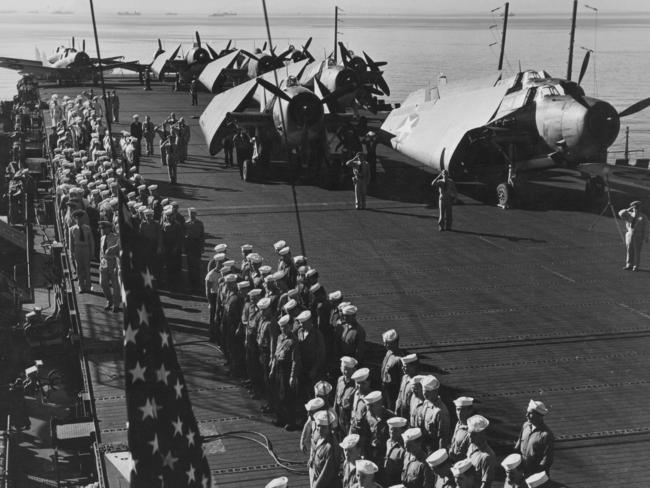Deep dive: Scientists set to explore sunken World War II-era aircraft carrier
RESEARCHERS will live stream a dive designed to examine the remains of a WWII aircraft carrier sunk off the coast of California.

A RESEARCH vessel will explore a ghost from World War II on Tuesday: a sunken aircraft carrier that served in the war and later withstood nuclear tests at Bikini Atoll.
The USS Independence, a light aircraft carrier, was intentionally sunk off California in 1951, and on Tuesday morning (AEST), viewers can tune into Nautiluslive.org to watch scientists explore the ship, which sits in 792m of water and is reportedly in good shape. The dive is slated to begin between 9am and 11am this morning.
Launched in 1942, the Independence served in the Pacific during the war, carrying planes that attacked Japanese forces. It was even torpedoed, in 1944, but managed to stay afloat, and was repaired.

But after the war ended, the 190-metre-long carrier was subject to nuclear blasts at Bikini Atoll, part of an infamous undertaking called Operation Crossroads. The explosions were as close as 512 and 1270 metres to the ship, which eventually, after the tests, was intentionally sunk in what is now the Greater Farallones National Marine Sanctuary near California.
“Resting upright in 2600 feet of water off California’s Farallon Islands, the aircraft carrier’s hull and flight deck are clearly visible in sonar images, with what appears to be a plane in the carrier’s hangar bay,” according to the National Marine Sanctuaries, a part of NOAA.
Before we dive on a wreck, we map it with multibeam sonar. Watch how we ping the deep sea: https://t.co/eOs3eDuhpm pic.twitter.com/Ofoxn1d43U
— E/V Nautilus (@EVNautilus) August 21, 2016

The Ocean Exploration Trust, which operates the 64-metre Nautilus, said that it will take an hour or more to get down to the Independence for a dive that will last around 16 hours and is expected to produce photographs and video of the historic ship.
This article appeared in Fox News and was republished here with permission.




